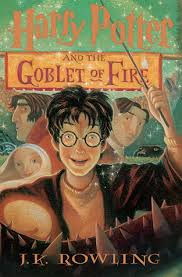YouTube vs. 'Goblet of Fire'
- Joanne Jacobs

- Sep 6
- 2 min read
Nearly half of teenagers say they're online "almost constantly," averaging hours a day on YouTube, TikTok and other platforms. Reading a book for fun is for oddballs.

Reading for pleasure is going out of fashion, writes Greg Toppo on The 74. When students do read, it's a series of texts and tweets. They don't have the stamina -- or perhaps the reading ability -- to handle a book or a textbook chapter.
Thirty-five percent of middle school kids read for fun almost every day in 1984, he reports. By 2023, it was just 14 percent. In that time, the proportion of 13-year-olds who said they “never or hardly ever” read for fun on their own time went from 8 percent to 31 percent.
David Saylor, who helped design American editions of the Harry Potter books, recalls when
the manuscript for J.K. Rowling’s fourth book landed on his desk a quarter-century ago, writes Toppo. "It was huge. Bigger, more complex and narratively intricate than virtually any storybook ever aimed at children." Would kids really read a 734-page book? Yes, they would. Harry Potter and the Goblet of Fire was a best-seller.
Twenty-four years ago, in my reporting for Our School, about a heavily Hispanic San Jose charter high school, I noticed what students chose to read during the daily reading period: Harry Potter books. It was culturally relevant: They were all Muggles.
All age groups are reading fewer books, writes Toppo. Nobody seems to have the patience.
Some fear that reading for pleasure is becoming an elite activity for what sociologist Wendy Griswold calls "the reading class." For everyone else, it is seen as “an increasingly arcane hobby.”
People read lots of words in a day, says literacy scholar Maryanne Wolf. But it’s “rarely continuous, sustained, or concentrated.” She sees “a demise of deep reading, which for me is synonymous with critical thinking and empathy and the beauty of the reading act.”
Toppo looks for reasons and finds a number of suspects. One is that schools aren't doing a great job of teaching reading in the early grades.
Ironically, one of the big drivers of the discredited “whole language” movement was to foster a love of books and reading. But what educators missed at the time was that not teaching all kids to read proficiently at a young age meant reading became “more and more laborious” as they got older, since they couldn’t handle more complex texts, said Holly Lane, director of the University of Florida Literacy Institute. “Nobody likes doing something that they’re not good at,” she said.
Students are asked to read short texts to build skills that will be tested. They're not asked to read as many whole books as in the past. Used to the stimulation of digital entertainment, they find it harder to enjoy books.
And there are many more classroom distractions, both from smartphones and disruptive classmates.
I don't think overscheduling is a factor. Most students spend very little time on homework. They choose to entertain themselves on screens rather than by reading. and a great deal of time on social media or gaming.






As many have argued, the way literature is taught in grades 6-12 seems to be designed to kill any desire to read for pleasure.